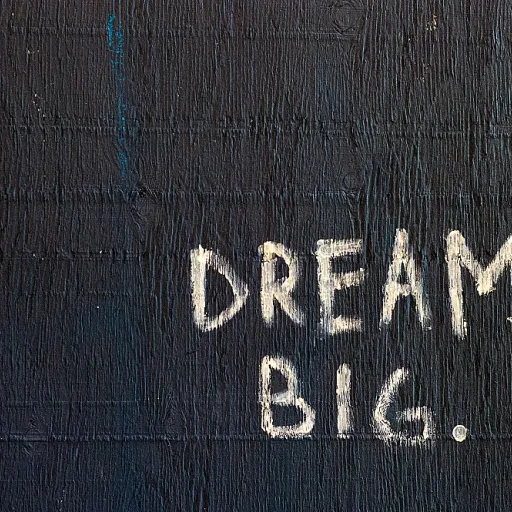
The Role of Prerequisite Courses in Education
Understanding the Importance of Prerequisite Courses
In the realm of higher education, prerequisite courses play a pivotal role in shaping a student's academic journey. These courses are designed to ensure that students possess the necessary background knowledge before advancing to more complex subjects. For instance, a science course might require a lab class as a prerequisite to ensure students have hands-on experience before tackling upper division topics.
Prerequisite courses are not merely hurdles; they are foundational elements that contribute to student success. By establishing a baseline of knowledge, these courses aim to enhance student performance in subsequent classes. This is particularly crucial in fields like science, where understanding fundamental concepts is key to mastering advanced material.
However, the role of prerequisites extends beyond individual student learning. They also serve as a tool for educators to gauge the preparedness of their class students. By analyzing data based on student performance in prerequisite courses, educators can tailor their teaching methods to better address the needs of their students.
Despite their benefits, prerequisite courses often raise questions about their effectiveness and necessity. Some argue that they consume a lot of time and resources, potentially delaying a student's progress through their education. These concerns highlight the need for ongoing evaluation and adaptation of prerequisite requirements to ensure they truly benefit students.
For those interested in exploring how prerequisites can be optimized for student success, consider reviewing resources on enhancing skills with a medical assistant competency checklist. This can provide insights into how structured prerequisites can lead to improved outcomes in specific fields.
Advantages of Prerequisite Courses
Enhancing Student Preparedness
Prerequisite courses play a crucial role in preparing students for more advanced levels of study. By ensuring that students have the necessary background knowledge before tackling upper division classes, these courses aim to enhance student performance and success. For instance, in science courses, understanding fundamental concepts is essential for grasping more complex topics. This foundational knowledge can significantly impact a student's ability to perform well in higher education.
Structured Learning Pathways
Another advantage of prerequisite courses is the structured learning pathway they provide. By following a sequence of courses, students can build on their knowledge progressively, which can lead to improved student learning outcomes. This structured approach is particularly beneficial in fields like science, where each class builds on the previous one. According to various surveys and data collected from universities, students who follow a well-defined course pathway tend to perform better academically.
Improved Student Success Rates
Prerequisite courses can also contribute to higher student success rates. By ensuring that students are adequately prepared for advanced coursework, these courses can help reduce the likelihood of students struggling or dropping out. This is particularly important in higher education, where the demands of upper level classes can be challenging. Articles and research have shown that students who complete prerequisite courses often have a better chance of succeeding in their chosen fields.
Addressing Student Questions and Concerns
While some students may question the necessity of prerequisites, these courses can provide valuable opportunities for addressing any gaps in knowledge. By taking the time to complete prerequisite courses, students can enter advanced classes with greater confidence and a stronger understanding of the material. This preparation can make a significant difference in their academic journey and overall performance.
For more insights on the benefits and challenges of pursuing an international education, you can explore this article.
Challenges and Limitations of Prerequisite Courses
Overcoming the Hurdles of Prerequisite Courses
Navigating the landscape of prerequisite courses can often present a series of challenges and limitations for students. While prerequisite courses aim to create a foundational base for more advanced studies, they can also become a source of frustration and hinder academic progress. Firstly, it is crucial to acknowledge the impact that prerequisite courses have on students with varying backgrounds. Not all students begin their higher education journeys with the same level of background knowledge. For instance, those who have not been exposed to certain science courses in high school may find it challenging to meet the prerequisite requirements of higher education programs. This disparity can affect student success, ultimately influencing their performance in upper division classes. Additionally, prerequisites can consume a significant amount of students' time, particularly if they have to retake a prerequisite class due to inadequate performance. This time commitment might reduce the opportunity for students to explore other areas of interest or engage in extracurricular activities, ultimately impacting their overall educational experience. Moreover, the rigidity of prerequisite structures can stifle innovation in teaching and learning. In a rapidly evolving educational landscape, where teaching learning strategies are continuously being reevaluated, sticking strictly to outdated prerequisite requirements may miss addressing the evolving needs of contemporary education. While scholars and educational institutions hold on to prerequisites for ensuring that students are well-prepared for advanced coursework, these requirements can sometimes act as barriers rather than facilitators of student learning. Often, the effectiveness of such courses as a predictor of student success is questioned. Various articles explore the difference success rates when prerequisites are flexible or even waived in favor of assessment-based models. One must also consider the dependence on data based from survey and statistical research, often an overlooked point when debating the value of prerequisites. Questions arise as to whether data used to support prerequisites align with the current demands of the labor market and industry requirements. In acknowledging these challenges, exploring bridging the skills gap in procurement and acquisition management offers insights into alternative pathways to developing crucial competencies without being restricted by traditional prerequisite structures.Impact on the Skills Gap
Influence on Bridging the Gap in Skills
In evaluating the impact of prerequisite courses on the skills gap, it becomes evident that these courses play a multifaceted role in higher education. Prerequisites are generally designed to equip students with essential background knowledge required for success in upper division classes. However, the reality of their impact is quite nuanced. Prerequisites can often lay a solid foundation for student performance by ensuring that scholars possess the necessary understanding before advancing into more complex coursework. This critical function helps in enhancing student learning, particularly in demanding fields like science courses and lab classes. Data from various education articles underscore that students who adequately complete prerequisite courses tend to fare better in their subsequent academic pursuits, highlighting a direct connection between prerequisite course success and overall student success. Nevertheless, while prerequisites aim to prepare students adequately, they may also inadvertently contribute to widening the skills gap. A survey of higher education institutions has raised questions about the rigidity of course prerequisites. For instance, students possessing different learning backgrounds may find their performance stymied by these requirements, which can seem insurmountable for those without ample resources or prior knowledge. This situation often results in a lot of time spent on foundational courses that, for some, delay access to upper-level classes and professional life. In practice, while course prerequisites may be beneficial for many, they may create barriers for class students aiming to enter high-demand sectors. A modern approach addressing these challenges may involve rethinking how prerequisites are integrated into the curriculum, possibly alongside alternative methods of bridging the skills gap. Data-based initiatives that focus on teaching learning have the potential to introduce more flexibility, enabling a better alignment with diverse student needs. While prerequisite courses hold value in delineating necessary educational benchmarks, education systems might consider evolving their frameworks to accommodate a dynamic student population. In so doing, they can reduce existing barriers and potentially close the skills gap more effectively.Alternatives to Traditional Prerequisite Courses
Reimagining Pre-course Requirements: Exploring Alternatives
In today's rapidly-evolving educational landscape, the traditional prerequisite course model is entering a period of re-evaluation. As educators and institutions seek to enhance student learning and success, several alternative approaches offer students more flexibility and relevancy in their education.- Competency-Based Education: This approach emphasizes skills and knowledge over traditional coursework. Instead of requiring a specific prerequisite course, students demonstrate their competency in a subject area before advancing to upper-division classes. This method acknowledges prior learning and allows for personalized pathways, potentially saving a lot of time and resources in the academic journey.
- Integrated Learning Modules: In science courses and beyond, offering integrated modules can enable students to acquire necessary background knowledge without the rigidity of traditional prerequisites. These modules often combine various subjects, fostering a holistic understanding and more engaging student learning experiences.
- Bridge Programs: Targeted bridge programs can help students transition to higher-level classes by focusing on the skills and knowledge needed for success. Such programs often address student performance and their specific questions, providing tailored support and reducing the gaps in student success that a prerequisite student might face.
- Mentorship and Peer-Assisted Learning: Encouraging collaborative learning through mentorship pairs inexperienced students with knowledgeable class students. This model leverages the experience of those who have already completed a prerequisite class, facilitating practical learning and performance improvement.
- Flexibility in Teaching and Learning Modes: As more universities incorporate online education and hybrid models, there is an increasing opportunity to utilize data-based instruction tailored to individual needs. This approach can cater to students' diverse life circumstances and educational backgrounds.
Future of Prerequisite Courses in Bridging the Skills Gap
Shaping the Future: Transforming Prerequisite Courses
The landscape of education is continually evolving, and with it, the role of prerequisite courses in bridging the skills gap is under scrutiny. As students navigate their educational journeys, the relevance and necessity of these traditional class prerequisites are being re-evaluated. The future of prerequisite courses will likely see a shift towards more inclusive and adaptive education systems that cater to diverse student backgrounds and learning curves. Universities and higher education institutions are increasingly acknowledging the need to align their prerequisites with real-world demands and science-based evidence. This will ensure that students are not just equipped with theoretical knowledge but also practical skills applicable in the workplace.- Adaptive Learning Models: Leveraging data-driven and student-centric methodologies, education systems are exploring adaptive learning models that tailor prerequisite courses to individual student needs. This approach aims to minimize the time spent on unnecessary prerequisites while enhancing student success through targeted course prerequisites that address specific knowledge gaps.
- Interdisciplinary Approaches: There's a growing trend towards interdisciplinary prerequisite courses that blend science, technology, and broader themes. These courses aim to enrich background knowledge, fostering a holistic understanding, which improves student performance across various upper division course levels.
- Minimalist Course Design: Some scholars advocate for a minimalist approach, where class students engage in fewer prerequisites, allowing for more time in practical lab classes and direct field experiences. This strategy is rooted in the belief that practical exposure can bridge the skills gap more effectively than an extensive list of prerequisites.












